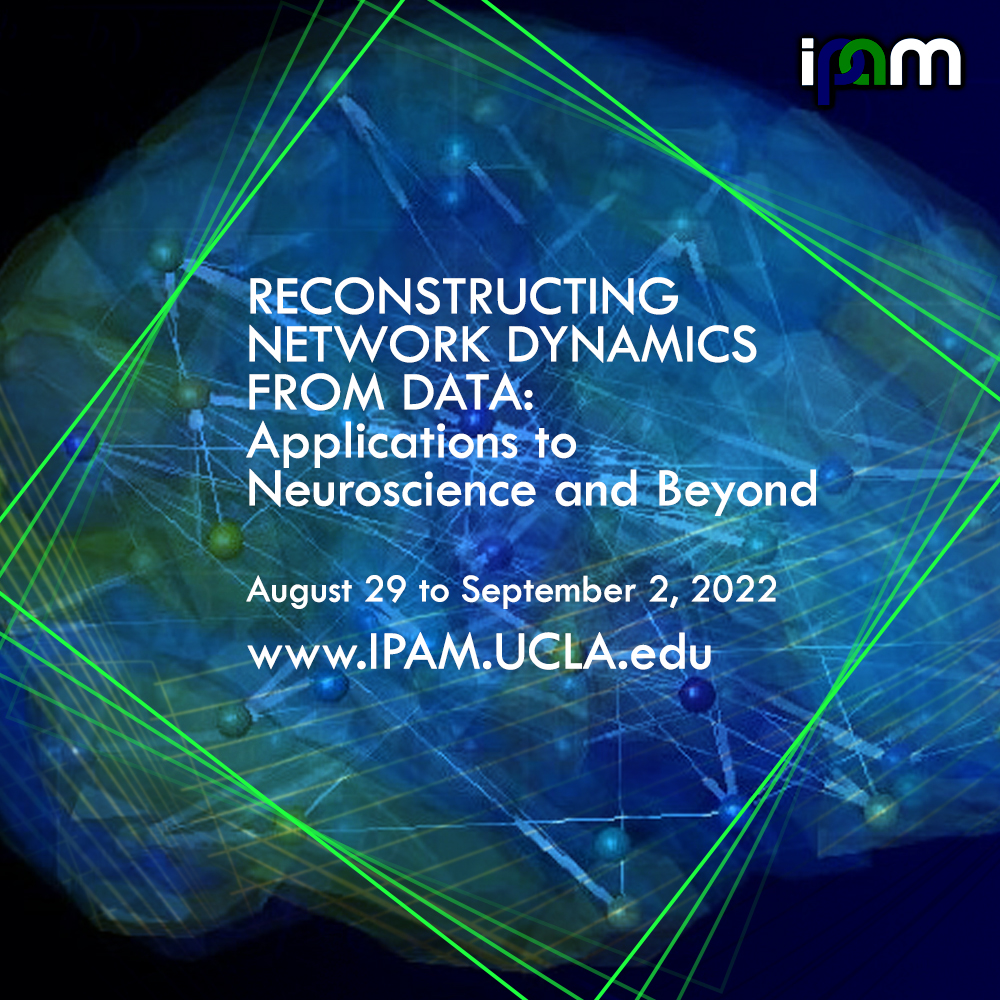Aneta Stefanovska - Time: How it matters
Presenter
August 31, 2022
Abstract
Recorded 31 August 2022. Aneta Stefanovska of Lancaster University presents "Time: How it matters?" at IPAM's Reconstructing Network Dynamics from Data: Applications to Neuroscience and Beyond.
Abstract: The simplest definition of dynamics is the evolution of position in time and space. For the case when this change happens monotonically, almost everything is known. Newton's laws specify the evolution in detail. The result could be motion around a stable, or unstable equilibrium point, or indefinite motion in a straight line.
For the case of a multiple, but still finite, number of equilibrium points, the dynamics may be chaotic. The corresponding theory has been developed over the last several decades.
For a very large number of interacting systems the motion is treated as random, and is well elaborated in terms of statistical physics and mathematics. Within this framework it is generally irrelevant whether the motion is internally or externally driven.
A common feature of these approaches is that the motion is treated in the asymptotic limit of infinite time.
However, there are many motions that are cyclic, but with cycles that are imperfect. This is because various internal and external influences modulate the amplitude, and more importantly the frequency, of the cycling motion. Such examples include the rotation of the Earth around its orbit, tidal cycles, the beating of the heart, production of ATP - the energy currency of a living cell, and the electrical waves in the brain.
For nonautonomous systems of this kind, when external influences on the motion are significant, the theory is still under development. It is commonly believed that non-autonomous systems can be mathematically expressed as autonomous, by an addition of an extra dimension. However, this is true only for cases that are trivial. In reality, the external influences affect the velocity of motion. So, to understand the external influences and their effects, we need to identify the causes of these velocity changes. For this we must consider time as a physical quantity and add as many dimensions as we expect to have external influences. This also implies that we need to treat the motion in finite time, and not asymptotically. Networks can then be perceived as interacting systems that mutually modify their velocities of cyclic motion.
In this talk we will introduce a new theory of finite-time nonautonomous dynamics of networks, and will discuss how to extract relevant information about such motion from measured time-series. Examples from brain dynamics in ageing and dementia, and cell energy metabolism will be used to illustrate this approach.
Learn more online at: http://www.ipam.ucla.edu/programs/workshops/reconstructing-network-dynamics-from-data-applications-to-neuroscience-and-beyond/?tab=overview
